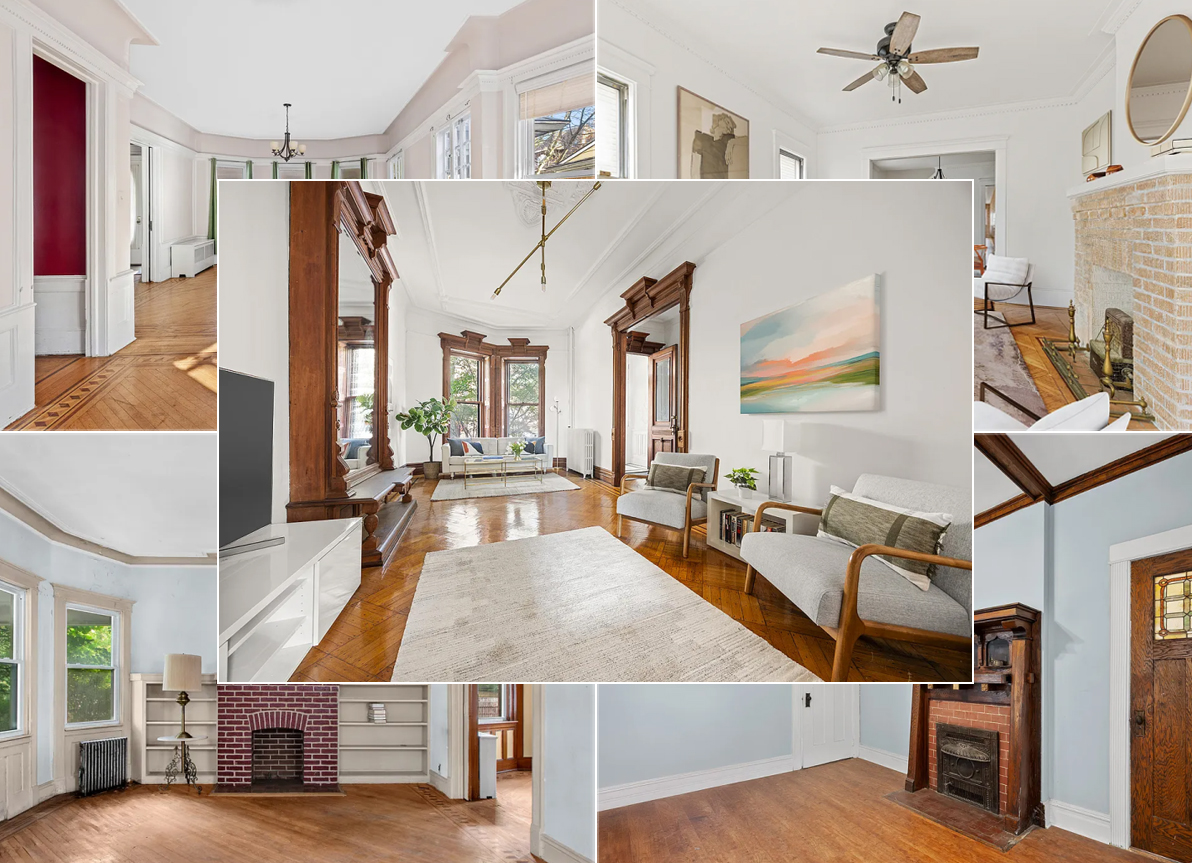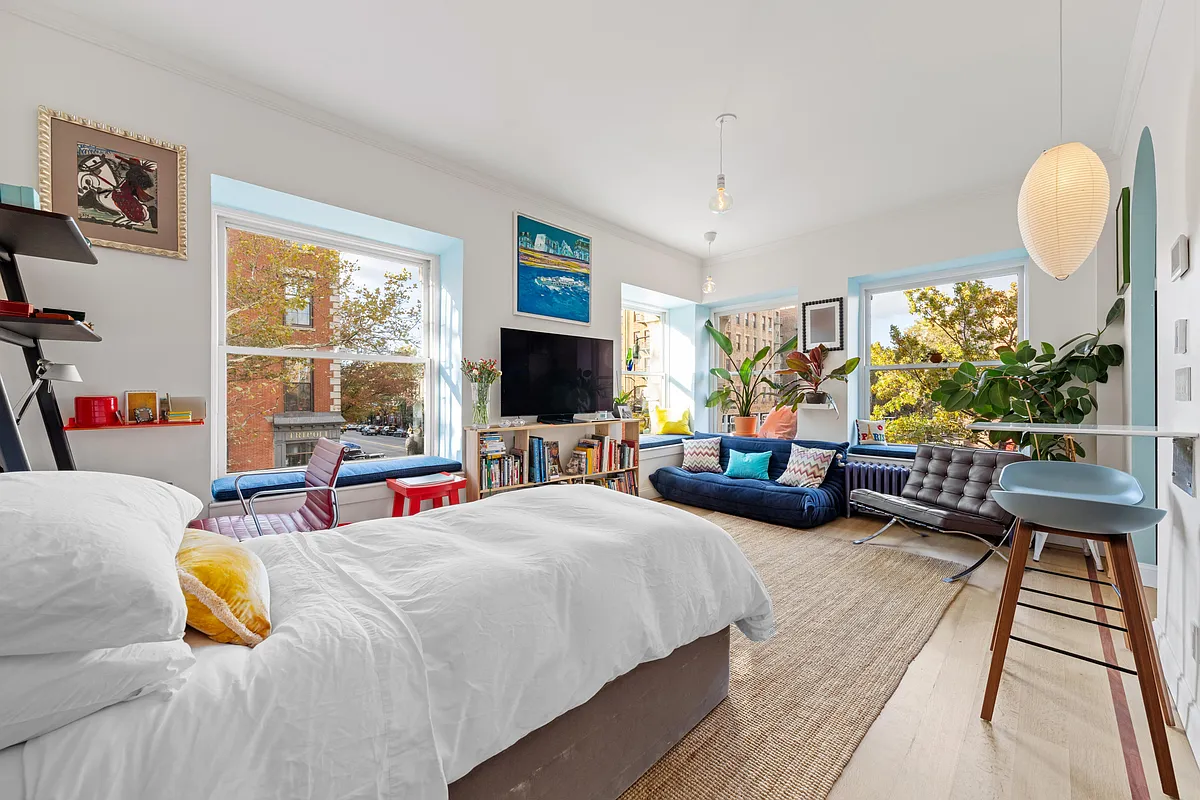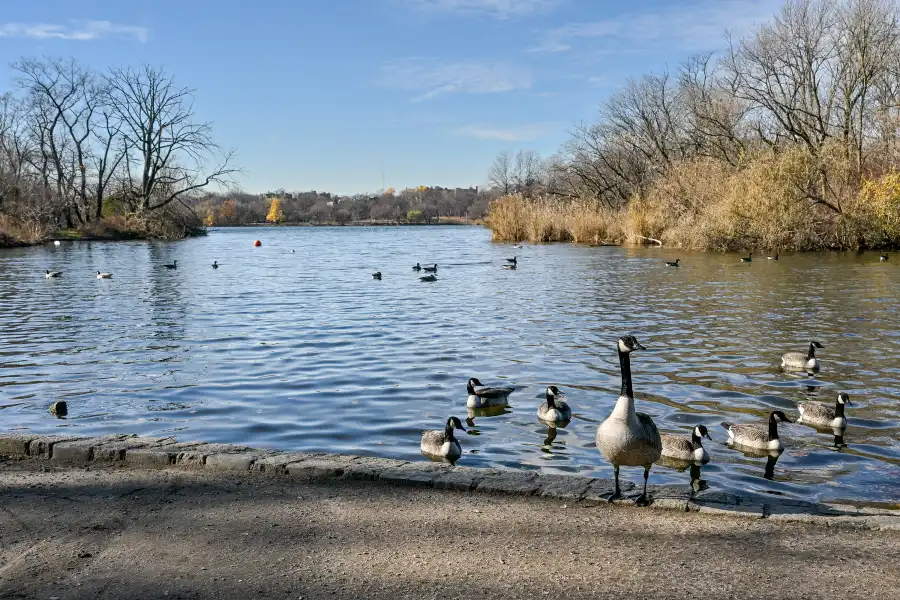Could Streetcars Return to Brooklyn?
Streetcars were once a big part of Brooklyn life—could they play a role in connecting currently underserviced areas while enhancing the street-level experience? That’s the theory being floated by some enthusiasts. And people are starting to listen. Most notably, DOT Commissioner Janette Sadik-Kahn who, noting the success of its streetcar system in generating economic developer,…

 Streetcars were once a big part of Brooklyn life—could they play a role in connecting currently underserviced areas while enhancing the street-level experience? That’s the theory being floated by some enthusiasts. And people are starting to listen. Most notably, DOT Commissioner Janette Sadik-Kahn who, noting the success of its streetcar system in generating economic developer, recently said We need to rebalance the transportation network and make it as efficient and effective as possible. (Midwood resident Arthur Melnick has been pushing this idea for many years, particularly for the waterfront areas of Red Hook and Brooklyn Heights, and the Brooklyn Historic Railway Association has even built a few tracks over near Ikea.) And while there are nostalgic and touristic reasons to consider the idea, blog The Transit Politic sums up the practical side of the issue:
Streetcars were once a big part of Brooklyn life—could they play a role in connecting currently underserviced areas while enhancing the street-level experience? That’s the theory being floated by some enthusiasts. And people are starting to listen. Most notably, DOT Commissioner Janette Sadik-Kahn who, noting the success of its streetcar system in generating economic developer, recently said We need to rebalance the transportation network and make it as efficient and effective as possible. (Midwood resident Arthur Melnick has been pushing this idea for many years, particularly for the waterfront areas of Red Hook and Brooklyn Heights, and the Brooklyn Historic Railway Association has even built a few tracks over near Ikea.) And while there are nostalgic and touristic reasons to consider the idea, blog The Transit Politic sums up the practical side of the issue:
Brooklyn is ideal for streetcars, and the city should be considering their widespread installation in areas where improved transit service is needed, because they’re effective in creating denser, more livable neighborhoods. The eastern half of Berlin is perhaps a good example for how Brooklyn could integrate streetcars into its existing transportation network. There, the 192 km collection of Straßenbahn lines run in areas that are not adequately served by the U-Bahn and S-Bahn rail services. The system runs mostly in areas that are less dense than Brooklyn overall, but it still attracts high ridership. (Berlin’s most central borough, Friedrichshain-Kreuzberg, has a density of 13,000 people/km2, equivalent to that of Brooklyn; the rest of Berlin, however, has about half that density.) Why not, then, envision a similarly ambitious program for transit expansion in Brooklyn?
Indeed, though streetcars have far lower capacity than subways, they’re far cheaper to build and they carry significantly more people than bus lines when they’re built close to light rail standards, with some of their own running way, high-quality stations, and extended vehicles. Because they’re electrically operated, they’re also pollution-free (directly, not necessarily indirectly). For a city that’s incapable of building a tiny two-mile extension of its subway system on time and on budget, a streetcar network might be the solution.
The blog highlights much of southeastern Brooklyn, Red Hook and parts of Bed Stuy as areas whose residents desperately need better access to existing public transit. Crazy, or so crazy it just might work?
Streetcars for Brooklyn: A New Life? [The Transport Politic]





PS – there’s a really cool ongoing exhibit (multimedia presentation, actually) at the Museum of the City of New York. In 25 minutes, it takes you through the growth and history of New York from native American villages through the present day, including how the spread of public transit and commuter railways affected the growth.
I’m making it sound boring, but it’s actually very, very cool. Check it out if you’re ever in the vicinity of 5th Ave and 105th.
Here’s a link: http://www.mcny.org/exhibitions/current/timescapes-a-multimedia-portrait-of-new-york.html
Bonus: the exterior of the museum doubles as the exterior of the school on Gossip Girl!
The map on the Transport Politic blog indicates the existing subway lines in Brooklyn. The shaded colored areas around these existing lines indicates the distance from 1/4 mile to 1/2 mile. Just glancing at it, you can see most of the gray area is along the waterfront and in the Midwood/Canarsie area. The idea proposed from Park Place is logical since most of the underserved areas are cut off by existing highways. By burying the existing highways in Brooklyn and placing a light rail system over them this would be beneficial. It will be very expensive but the government should try to privatize the light rail and/or sell air rights to developers to build housing over them. They were able to do this for Grand Central Station.
It’s seems like several posters here are saying “it sucks right now so let’s just leave it alone.” Which makes no sense.
And when you think about it, the subway is actually pretty amazing and comprehensive… and much of it was built over 100 years ago! That is a pretty good payback on the investment. Is the subway expansive enough to last the city another 100 years, as the city continues to grow and expand? No. That’s why we need to think forward.
A well-designed lightrail that uses a special cordoned-off lane of a freeway is very fast. Lights can be timed for approaching trains, as they are in many other cities. Your metrocard offers you transfer to a bus or subway if needed. This would be a real, viable alternative to using a car. People will use it if it’s faster and less of a hassle than driving.
tybur6 your going to need more:
** They create a sense of permanence and regularity for economic areas that buses do not.
–How can this be measured and even if true, they also have FAR less flexibility, therefore if areas needs change due to economic, social or enviromental reasons – you can not easily accomodate these changes with streetcars….At best a tie
** They are easier to navigate than buses (the tracks tell you what to expect)
For whom? in reality buses are far easier to navicate (i.e. steer) than a train – making a train route turn a corner (which may be very helpful in creating the best route) is FAR easier and cheaper for a bus (with a dedicated ROW) then creating the same maneuver in tracks (which requires alot more space)…Advantage Bus
** While streetcars have higher up-front costs, long-term maintenance is lower (train cars last longer than buses) – lasting longer does not = lower costs and even if true the up front costs for a train are EXPONENTIALLY higher than a bus – not to mention that for streetcars you have to maintain an entirely different infrastructure (tracks and power delivery) whereas with a bus, the ROW will be the same basic upkeep that you are already providing to the regular roadway (i.e. economies of scale) thereby making buses far cheaper overall (which is why they replaced streetcars in the 1st place)….advantage bus
** Street cars are safer and less vulnerable to disruption in bad weather (especially ice and snowy days)
You have no empirical evidence of this, mainly because I would guess it is not true, and certainly anecdotal I do not see our current (non-light rail system) performing especially well in the snow, I can not recall the last bus accident fatality, nor do I see removing snow from a streetcar track being any easier then plowing a road…with out evidence – this one is a wash at best
** The majority of people find trains more comfortable than buses because of the regularity of the surface and they are usually slightly roomier.
Please direct me to the study on this – nor are streetcars inherently roomer than a bus – it all depends on how you build them. as for the comfort of the ride….is that really a major consideration anyway?? Ill give this to you as an irrelevat advantage for streetcars.
** Streetcars can be designed to provide different options for loading and unloading, fare taking and so on, to increase the speed of loading/unloading
Anything you can do in streetcar design – you can do for bus design … tie again.
So yes you still need to show a relevant advantage for streetcars – because if you are designing a streetlevel mass transit with a dedicated ROW – I cant see a single legitimate one.
McKenzie- I hear you. I lived there until 2003 and yes, the overcrowding and the huge amounts of construction have really burdened the neighborhood. While I lived on Schermerhorn they begin putting up the Bklyn law dorm- right behind us. It was a nightmare. then there was all the construction on Court, and even more on Schermerhorn and then it seemed like the entire construction world discovered us and that was it.
Its a prime example of almost non-existent city planning- its all bits and pieces. The Heights is a transportation hub, its close to Manhattan – its a victim of its own success. I just believe that we need to rethink public transportation in a big way- and all of us will be inconvenienced but all of us will ultimately benefit. I love CHN, but we would love to have more public works going on. We need it- there is no such thing as “benign neglect”-
McKenzie, bxgrl is right. People get run over by cars every day too. At least with streetcars/light rail, you’d have A) drivers who are (in theory) competent professionals, and B) a limited and clearly defined area where it’s unsafe to stand/walk (not much risk of a streetcar jumping up on the sidewalk).
That map pretty clearly shows that there are some areas that are underserved by existing transit options. (Yes, there are buses, but we all know how much those can suck.) Streetcars would certainly be more feasible than pipe dream plans I’ve heard floated to extend the L or the 2/5.
bxgirl, I don’t know about other cities and streetcars, I’m not a know-it-all, or pretend to be one. I don’t know what space-age streetcars look like. I just know that I am barely able to cope right now with the hassle and expense and overcrowding in my neighborhood and I don’t think I could bear another huge problem. The street corner near my home at Joralemon and Hicks has been opened up and in a state of disaster for a month. Some days they close down HIcks STreet altogether. YOu know what they are doing? repairing a gas pipe. This has taken a month. four backhoes, truckloads of temporary asphalt goop, steel plates, giant concrete things on the sidewalk that they have to bury. it is a warzone. and it is all to repair a gas line. could you just imagine streetcars? they also would have to be handicap accessible and they would not be allowed to interfere with bicycles. The mind boggles. it would be a hundred-year construction project. I’m down today on public works in NYC. They never seem to run efficiently or to ever be finished.
fsrq… I already named several advantages Streetcars have over buses. But I will do it again.
** They create a sense of permanence and regularity for economic areas that buses do not.
** They are easier to navigate than buses (the tracks tell you what to expect)
** While streetcars have higher up-front costs, long-term maintenance is lower (train cars last longer than buses)
** Street cars are safer and less vulnerable to disruption in bad weather (especially ice and snowy days)
** The majority of people find trains more comfortable than buses because of the regularity of the surface and they are usually slightly roomier.
** Streetcars can be designed to provide different options for loading and unloading, fare taking and so on, to increase the speed of loading/unloading
Do you want more?
fsrg: you are right there. There are few advantages if both have dedicated ROW. For an excellent example of Bus Rapid Transit check out Curitba in SA: http://en.wikipedia.org/wiki/Curitiba#Public_transport
And BRT is cheaper but less sexy…buses?? I ain’t riding no buses